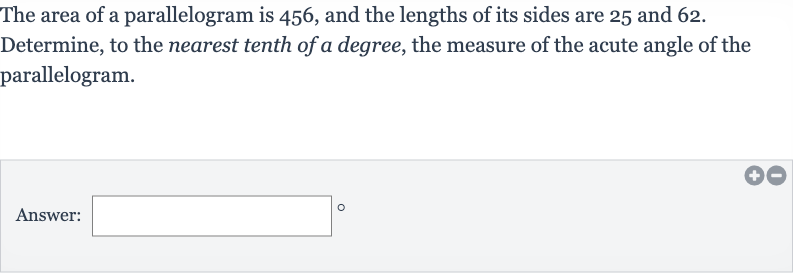AI tutor
Welcome to Bytelearn!
Let’s check out your problem:

The area of a parallelogram is , and the lengths of its sides are and . Determine, to the nearest tenth of a degree, the measure of the acute angle of the parallelogram.Answer:
Full solution
Q. The area of a parallelogram is , and the lengths of its sides are and . Determine, to the nearest tenth of a degree, the measure of the acute angle of the parallelogram.Answer:
- Area Formula: The area of a parallelogram is given by the formula:We are given the area () and the lengths of the sides ( and ). We can assume one of the sides to be the base. Let's choose the side with length as the base.
- Find Height: Now we need to find the height of the parallelogram. The height is the perpendicular distance from the base to the opposite side. Using the area formula, we can solve for the height (h):
- Calculate Angle: The height forms a right triangle with the base and the side of the parallelogram. The acute angle (let's call it θ) is the angle between the base and the side of length . We can use the sine function to find this angle since we know the opposite side (height) and the hypotenuse (side of length ):
- Find Angle: To find the angle θ, we take the inverse sine (arcsin) of the value we calculated:Using a calculator, we find that:
More problems from Inverses of trigonometric functions
QuestionGet tutor help
QuestionGet tutor help
QuestionGet tutor help
QuestionGet tutor help
QuestionGet tutor help
QuestionGet tutor help
Question
. Find the value of in degrees.Write your answer in simplified, rationalized form. Do not round.____
Get tutor helpQuestionGet tutor help
